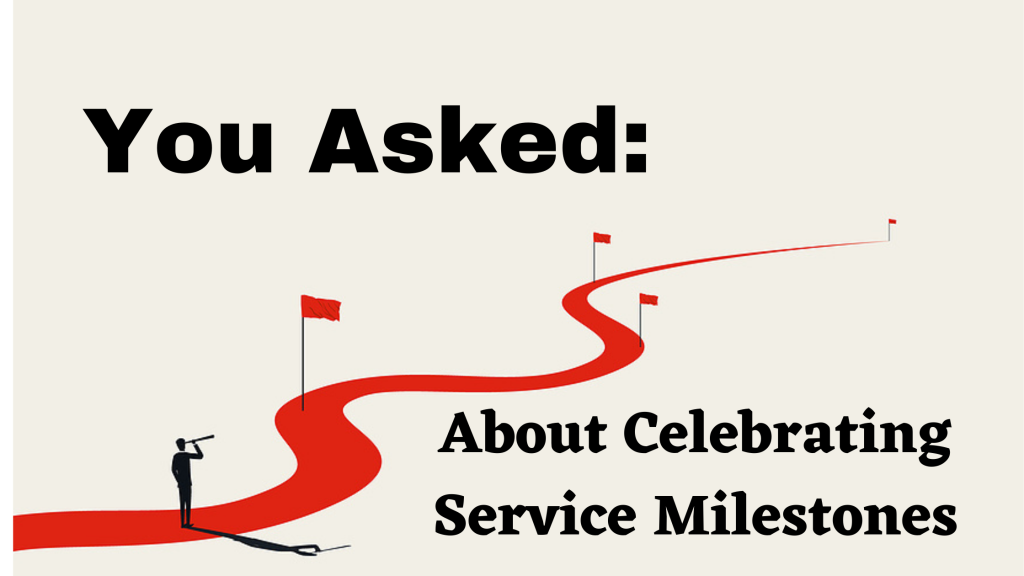
The Question: What is the best way to celebrate service anniversaries?
The Answer: Let’s begin with what not to do. The decades-old practice of holding formal service celebrations with speeches, certificates, plaques and gifts at five-year intervals has hung around long past its “best-before” date.
These celebrations require a great deal of preparation and are expensive (one study found that organizations were spending more than 50 per cent of their recognition budgets on annual service events). Even worse, they celebrate the wrong thing: survival rather than how staff members have made a difference.
Whether they did a good job or did just enough to avoid being fired over the last five years, everyone will be invited to the same service celebration and will receive the same awards after five years. And it will happen again five years later and in five years after that.
Five years is a long time to wait to be recognized—longer than the tenure most people have with one organization.
This doesn’t mean that service milestones should not be observed. They certainly should be, but more frequently and with less formality. Service anniversaries come around every year and like birthdays and wedding anniversaries they should be celebrated, as close as possible to the actual date on which the individual joined the organization.
These celebrations should be less focused on the time served and more on how the individual has contributed, particularly in the year since the last service milestone.
Retaining new staff
For new staff, who are at high risk of leaving during the first months, more service milestones should be celebrated. What did they achieve in their first month? During the first three, or by the half-year mark?
A key to retaining new staff is to reassure them that their decision to join the organization was the right one and to let them know that they are appreciated for what they have accomplished in the short time they have been on the team. Highlighting these short-term milestones should be part of your new staff retention strategy.
People stay where they feel valued and appreciated.
Related Article: Top 7 Ways to Build Commitment on a New Employee’s First Day
You may be part of an organization that clings to how service anniversaries have always been celebrated. Accept that and do more for staff in your workplace. Employ a low-key, more frequent approach to marking service milestones for those with whom you work most closely.
Create another opportunity to celebrate a year’s worth of contributions and achievement by doing more than just noting people are a year older on their birthdays. Highlight what they have accomplished since you celebrated their last birthday.
With a focus on how staff have contributed over the past year, you will be recognizing staff members in ways that are Relevant, Explicit and Timely. This creates Genuine recognition that staff members will value and find meaningful.
Suggestion for action: On a calendar, note staff members’ service anniversaries and birthdays and commit to highlighting their contributions and achievements of the last 12 months on those dates.







